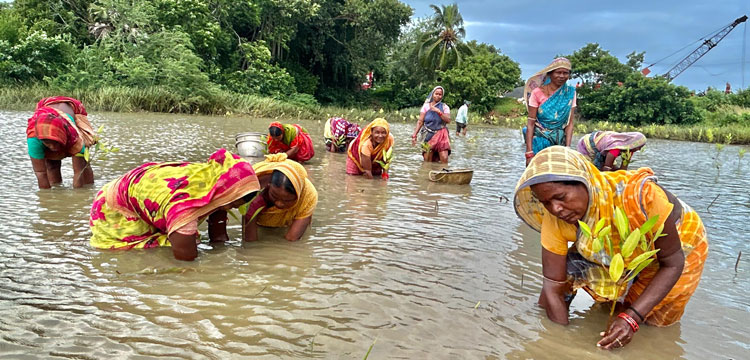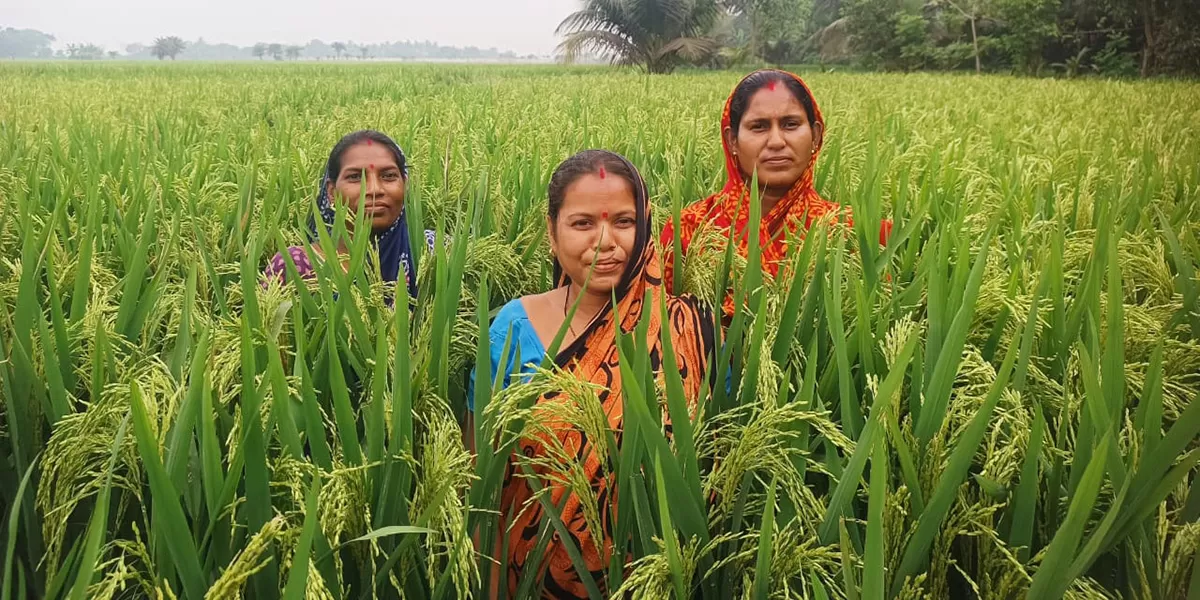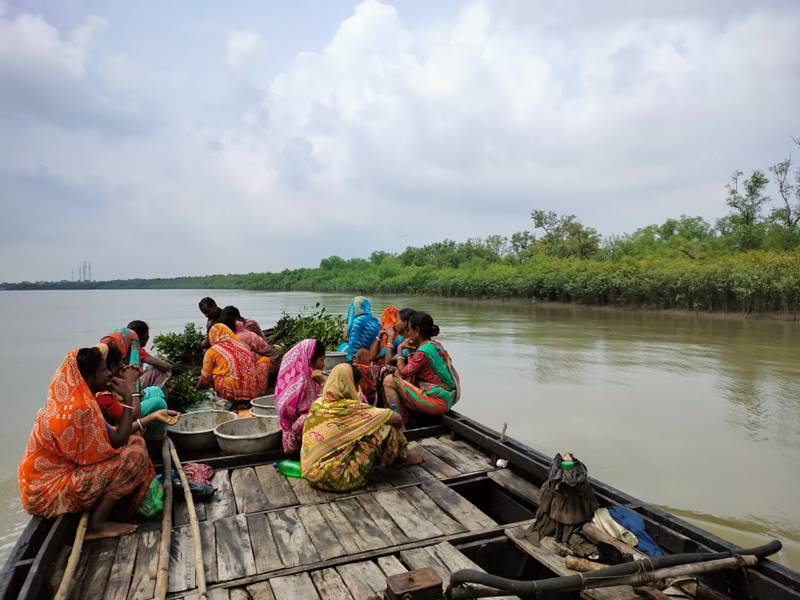
Guardians of the Green, Odisha’s women climate warrior:
In most Climate conferences, environmental seminars, and conservation programs, we see a pattern. The speakers are often the same well dressed men in formal attire, with powepoints and polished degrees, holding forth on the rising sea levels, green economies and carbon futures. Their roles, often visible, vocal and validated.
However, what often goes unacknowledged are the quieter climate warriors. The women with worn but determined hands, who’s work never makes it to the podium. Women with no certificates, no college degrees or any official designation. What these women have instead, are deep inherited knowledges of the land, the tides, of which tree grows best where, and when.
 A group of coastal Odisha women heading out to plant mangrove saplings ( Picture by Odishabytes)
A group of coastal Odisha women heading out to plant mangrove saplings ( Picture by Odishabytes)
Daughters of the Delta:
In the flood-prone estuaries of Odisha, these women are not just adapting to climate change, they are defending the coastline with nothing but saplings, patience, and ancestral instinct. Without demanding recognition, they are nurturing mangroves , root by root, hand by hand, and in doing so, they are saving lives.
At sunrise, the coastline of Kendrapara comes alive not with the hum of industry or the roar of fishing boats, but with the quiet rustle of saris and the gentle splash of bare feet in brackish water. Here, among the gnarled roots of mangroves, a quiet revolution is unfolding, led by women who have made it their life’s work to protect these trees, and in doing so, protect the future.
Odisha is one of the most cyclone prone regions in the country. Every few years, tempests roll in from the Bay of Bengal, washing away homes, livelihoods, and sometimes entire villages. In 1999, a super cyclone claimed over 10,000 lives. But something has been changing, slowly, silently, and underground. Or more accurately, at the root level.
 Where textbooks fail, her toes in the tide know better
Where textbooks fail, her toes in the tide know better
Mangroves, with their dense, interlocking root systems, have emerged as a natural defence against climate disasters. They reduce the impact of storm surges, prevent coastal erosion, and store up to four times more carbon than tropical forests. But in Odisha, it isn’t scientists or policymakers at the frontlines of mangrove conservation, it’s women from the very communities most vulnerable to the sea.
Her hands, His headlines:
In many of Odisha’s coastal villages, men migrate to cities for work, leaving women to manage both the household and the landscape. Traditionally excluded from decisions around land and resource use, women found empowerment in environmental stewardship. For many women, mangrove conservation offers more than just ecological returns. It’s a source of income, dignity, and community leadership. Through small grants from NGOs and government schemes, women earn stipends for their work, form cooperatives, and even start micro-enterprises such as making dyes, honey, and pickles from mangrove-based resources.
She Who Plants in Silence:
There is no fanfare in their work. No breaking news headlines or photo ops. But these women are changing the climate story from the ground up. In 2020, when Cyclone Amphan hit, villages with healthy mangrove buffers reported less damage than those without. The science is clear, but so is the sentiment. Despite this, challenges remain. Climate change is accelerating, tidal patterns are shifting, and local knowledge, once passed down orally is under threat from urban migration and youth disinterest.
There’s a quiet defiance in the way Odisha’s women protect their land. It doesn’t scream or demand, but it endures, like the mangroves themselves. They remind us that climate action doesn’t always look like summit speeches or solar panels. Sometimes, it looks like muddy feet, calloused hands, and a woman teaching her daughter how to plant a future.

They raise saplings and families,while the men leave, they stay and grow roots
No One Applauds the Estuary:
In Odisha’s tidal edge, resilience doesn’t arrive in speeches or strategies. It grows slowly, in silence, under the mud. These women do not wait for climate summits or camera crews. They know that if they do not plant, no one else will. Their knowledge is unwritten, their names unrecorded, yet their impact runs deeper than any policy brief.
For More such articles please keep an eye out at The World Times.



